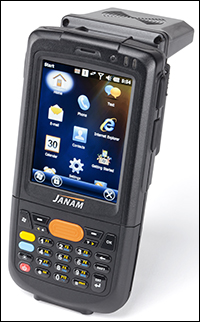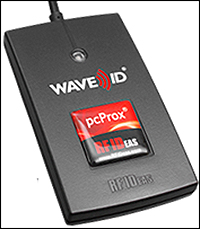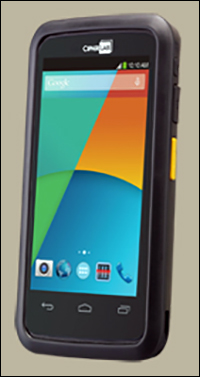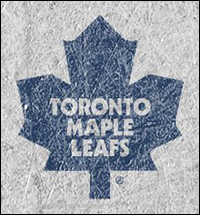RFID News Roundup
时间: 2015-07-04 16:19
Janam intros new handheld UHF RFID reader for supply chain operations ••• SATO, Cadi Scientific partner to launch PJM RFID Thermo IC Tag ••• RF Ideas announces badge reader for protecting laptops, tablets ••• CipherLab unveils touch mobile computer with NFC, RFID support for field applications ••• ice hockey team implements beacon technology from Rover ••• Lab ID intros new, small-footprint NFC inlay.
By Beth Bacheldor
Jul 02, 2015—
The following are news announcements made during the past week by the following organizations: Janam; SATO, Cadi Scientific; RF Ideas; CipherLab; Rover; and Lab ID.
JANAM INTROS NEW HANDHELD UHF RFID READER FOR SUPPLY CHAIN OPERATIONS
Janam, a provider of rugged mobile computers that scan bar codes and communicate wirelessly, has introduced the XM2-RFID UHF mobile computer, an ultrahigh-frequency (UHF) RFID reader designed to support retail, transportation, logistics, manufacturing and defense supply chain operations.

Janam's XM2-RFID UHF mobile computer
The XM2-RFID UHF is ergonomically designed to fit in the palm of a person's hand. Weighing only 13 ounces, it reads ISO 18000-63 and EPC Class 1 Gen 2 tags, and can complete more than 40,000 tag reads on a single battery charge, the company reports. The reader also includes Zebra Technologies' SE4500 2D imager for reading bar codes, which, according to Janam, reduces the complexity and number of devices that organizations need to deploy. It also comes equipped with a 3.2-inch color display and support for Microsoft's Windows Embedded Handheld 6.5 operating system.
"As organizations look for new ways to address today's business challenges, RFID has emerged as a viable and affordable option for applications such as cycle count and inventory management, supply chain efficiency and anti-counterfeiting of luxury goods," said Harry B. Lerner, Janam's CEO, in a prepared statement. "Janam's XM2-RFID UHF is not only fully-featured to meet the needs of a diverse set of mobile workers, but available at a highly attractive price point for organizations focused on improving their bottom line."
The XM2-RFID UHF is sealed to IP64 standards (ensuring its protection against harsh conditions) and is designed for all-day, every-day use. It features an ARM 9 processor, 128 megabytes of memory with expansion capability, 802.11b/g/n Wi-Fi and Bluetooth support, and a 2880 mAh hot-swappable lithium-ion battery.
SATO, CADI SCIENTIFIC PARTNER TO LAUNCH PJM RFID THERMO IC TAG
SATO and Cadi Scientific, a Singapore-based provider of health-care RFID tracking solutions, have announced that they will launch the jointly developed PJM RFID Thermo IC Tag in September 2015.
The tag employs SATO's unique Phase Jitter Modulation (PJM) technology, a type of RFID designed to quickly and accurately identify large volumes of tagged items stacked or stored in any physical orientation, according to SATO. The firm purchased Magellan Technology Pty Ltd., which invented the PJM RFID technology, in December 2013 (see SATO Acquires Magellan Technology).
The new PJM RFID Thermo IC Tags will be used in a blood bag solution that, according to SATO and Cadi Scientific, will greatly boost the efficiency of temperature tracking. The tags will enable accurate and complete temperature history from one end of the supply chain to the other, the two companies explain.
Cadi Scientific and SATO have a history of collaborating throughout the past several years, with SATO introducing Cadi's RFID solution to the Japanese market in 2014. They have also co-marketed a separate blood supply chain tracking solution since 2013.
"We have one of the most advanced solutions in the world for tracking temperature using RFID, and SATO's PJM technology has just perfected it," said Dr. Zenton Goh, Cadi Scientific's CEO, in a prepared statement. "With their breakthrough technology, it is now possible for us to effortlessly track blood bag temperature throughout the entire supply chain, dramatically reducing waste."
In 2014, SATO established SATO Healthcare to support the demands of the medical field, leveraging experience in the tracking and tracing of goods using automatic identification technology. Through the application of its unique PJM technology, the firm has rapidly grown its market share in the medical sector. "We needed each other," Kaz Matsuyama, SATO Holdings' president and CEO, added in the statement. "Cadi has a wealth of experience in RFID temperature tracking for the medical industry and their solutions are trusted by many world-class hospitals. We are very excited to combine our PJM technology with Cadi's temperature sensing solutions to enhance patient care and create value for our customers."
RF IDEAS ANNOUNCES BADGE READER FOR PROTECTING LAPTOPS AND TABLETS
RF Ideas has announced its pcProx Nano Horizontal Reader, a badge reader that can be used with laptops and tablets to help IT organizations secure the information stored on the devices from unauthorized access. The reader is also designed to help mobile workers comply with authentication and access policies. It can be used in a variety of applications, such as single sign-on, employee identification, time and attendance, point-of-sale, medical cart authentication and access, quality control and more.

RF Ideas' pcProx Nano Horizontal Reader
The readers work withHID Global's 125 kHz HID Prox cards, and have a reading distance of up to 1 inch, depending on the card type and environmental conditions. According to RF Ideas, they can easily be integrated into existing 125 kHz proximity badge systems.
The horizontal reader can be inserted into a laptop USB port, integrated into certain hardware, inserted into recessed USB enclosures, used with tablets and more, according to the company, and incorporates all features of desktop- and surface-mount readers into an ultra-compact USB format. The reader follows the company's recent announcement of its pcProx Nano Vertical Reader. Both models offer the same features; the choice of either the horizontal or vertical reader depends on the device. The horizontal form factor can be embedded, for example, into a recessed cavity on a multi-function printer, while the vertical form factor is suitable for a PanasonicToughbook, in which the USB connector is located in the computer's protective compartment (the vertical pcProx Nano can fit into the compartment with the door closed).
The pcProx Nano 82 Series readers come with RF IDeas' Universal Software Developer's Kits (SDKs) for integration with associated laptop and tablet software. The new horizontal reader measures 0.36 inch high by 0.62 inch wide and 1.14 inch long, while the vertical reader measures 0.72 inch high, 0.62 inch wide and 0.72 inch long. Both form factors weigh just 0.14 ounce.
CIPHERLAB UNVEILS TOUCH MOBILE COMPUTER WITH NFC, RFID SUPPORT FOR FIELD APPLICATIONS
CipherLab has announced its RS30 touch mobile computer, a rugged smartphone with an industrial scanning engine designed for use in a variety of environments for inventory, point-of-sale, data capture and other applications in the field.

CipherLab's RS30 touch mobile computer
The RS30 series touch mobile computer is a touch-centric smartphone with a built-in multi-touch panel operating on the Android 4.4 operating system. It features a sensitive touch panel that supports users' touch from bare fingertips or latex gloves, and includes a large 4.7-inch display.
CipherLab' s RS30 series offers data capturing through CCD, laser and 2D readers to efficiently capture 1D and 2D bar codes within four walls and under sunlight. The mobile computer is equipped with Near Field Communication (NFC) to enable peer-to-peer data communication and simplify device upgrade and management. It also supports RFID tag reading at short distances, using high frequency (HF) RFID 13.56 MHz technology, which supports ISO 14443A, ISO 14443B and ISO 15693. A built-in secure access module (SAM) slot allows data encryption to ensure security, CipherLab reports, while using NFC for payment applications.
The RS30 weighs 260 grams (9.2 ounces) and is built with a 4.7 Corning Gorilla Glass 3 panel capable of taking heavy usage, according to CipherLab. It has a IP54 rating, indicating it can withstand rugged environmental conditions. The RS30 series offers reliable a Wi-Fi connection to ensure accurate data transmission and real-time communication, the company notes, as well as a backup battery with hot-swap function to ensure that collected data will not be lost when the main battery is drained.
ICE HOCKEY TEAM IMPLEMENTS BEACON TECHNOLOGY FROM ROVER
Rover, a provider of mobile proximity technology, has announced that it is providing its services to the Toronto Maple Leafs, which will use the technology to engage with and support its fans.

The professional ice hockey team kicked off the proximity campaign, which leverages Smart Bluetooth beacon technology, with its draft party on June 26, using beacon-triggered content delivered through the Toronto Maple Leafs mobile app. Fans at the event who had the app installed on their smartphones were able to win prizes, interact with others and explore the many activities that make up the draft party program, according to Rover.
Rover's beacon technology works with both iOS and Android, and the solution comes with open-source software developer's kits (SDKs). The iOS SDK features iOS 7 and up, an install through CocoaPods, a native user interface and easy-to-use proximity events, the company reports. The Android SKD features Android 4.3 and up, as well as an install through Maven Central. In addition, an application programming interface (API) features JSON and secure access (HTTPS) to protect communication between a customer's mobile proximity app and Rover's platform. Tokenization ensures that customer data remains anonymous to external systems. An admin console enables access to manage any type of beacon and secure cloud storage, integrates with customer relationship management (CRM) systems, and allows data sharing with apps.
"Our priority is creating the best experience for our fans, whether it is in-arena or at events like the Draft Party, and the technology available through companies like Rover provides some exciting possibilities," said Shannon Hosford, Maple Leaf Sports and Entertainment's VP of marketing and communications, in a prepared statement. "We look forward to exploring new interactive options to ensure our fans are always as close to the action as they can be."
In addition to professional sports teams, Rover continues to expand its retail presence, which already serves companies in the grocery, pharmacy and specialty retail sectors.
"Proximity marketing is emerging as one of the most engaging channels available and Rover makes it easy for marketers to capitalize on it" John Coombs, Rover's CEO, added in the statement. "Across all of the verticals the platform serves, we are seeing extremely impressive engagement rates of 45-85 percent for proximity-triggered content... We see the powerful results of proximity marketing every day as we help our customers take advantage of it. Professional sports is a natural fit for this technology and we look forward to working with innovative teams like the Leafs who are building the fan experience of the future."
LAB ID INTROS NEW, SMALL-FOOTPRINT NFC INLAY
Lab ID has announced a new Near Field Communication (NFC) inlay compatible with NFC Forum Type 2 and ISO/IEC 14443 Type A specifications. According to Lab ID, the IN710 is designed to get the most advantage of NXP Semiconductors' high-capacity ICs: NTAG213, NTAG215 and NTAG216.

Lab ID's IN710 inlay
The IN710 is the smallest of Lab ID's NFC inlays, the company reports, with a diameter only 15 millimeters (0.6 inch). The company says the size makes it flexible and suitable for a wide range of applications requiring smaller inlays.
Depending on the version of the NTAG chip used, the tag offers 144, 504 or 888 bytes of user memory, as well as password protection to prevent unauthorized memory operations. With a fast read capability, Lab ID reports, it is possible to scan the complete NDEF message with only a single FAST_READ command.
"Our new small NFC tag is already used in an important project for product authentication. Other possible target uses include brand protection, smart advertising, vouchers and any other NFC application requiring tiny-sized tags with best-in-class performance," said Marzio Amadori, Lab ID's CTO, in a prepared statement. "IN710 is already available in volumes. It can be delivered in dry inlay, wet inlay or label. As usual, we also offer an additional service of fast and accurate RFID encoding (pre-encoding) and /or printing."
